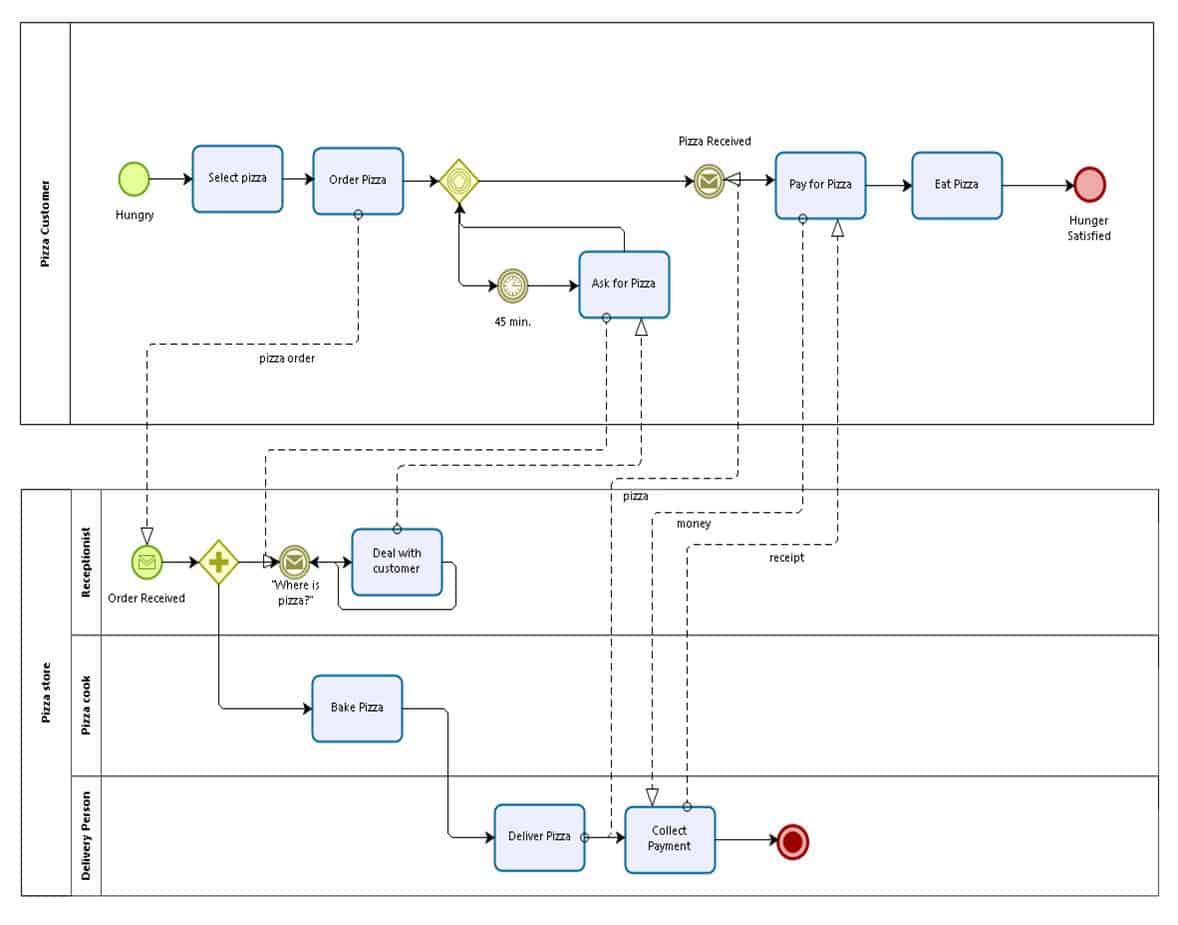

- #Business process modelling languages how to#
- #Business process modelling languages software#
#Business process modelling languages software#
BP Modeling allows software engineers to negotiate with stakeholders to determine the system that needs to be built, based on what is optimal for both groups. Experts recommend developing clear models with understandable notation early on in projects in order to validate the requirements of the software. The group’s recommendations to improve these numbers over the years have ebbed and flowed with new trends, but one main recommendation holds: communicate with all of the stakeholders, especially the end users, since end users are those who end up defining the requirements in the first place.

In the 2015 report by the same group, the rate of success for software development projects was still only 29 percent. Today that numbers are lower, but still reflect that there is work to be done. Twenty years ago, the 1995 CHAOS report by the Standish Group reported that 90 percent of software projects fail. This efficiency places the company in a forward-leaning position to be better than the competition. Gain competitive advantage - A process is better overall when it is constantly refined and aligned with its business’ strategies.This reduces cycle time and promotes better resource utilization. Improve operational efficiency - Modeling processes promotes optimization by allowing simulation and illustrating needed improvements.Improve process communication - Communication is the key to all of the following tasks: formalizing existing processes (that were once informal knowledge), making consistent processes, eliminating guesswork with business rules, handling exceptions, providing regulatory compliance, ensuring business people are in charge, and supporting new initiatives (such as Lean Six Sigma).Analyses are also performed to identify bottlenecks and inefficiencies, and enable process agility.
#Business process modelling languages how to#
Align operations - With any new business strategy, keeping processes consistent after a change requires figuring out how to stay within the overall organizational strategy. Backing it up with visual representations helps provide a comprehensive picture. To create visual models of processes - Word-driven documentation is often not sufficient for employees to understand the way a process is performed. Some of the other reasons to use BP Modeling are as follows: Within a Business Process Reengineering (BPR) event, BP Modeling is used to illuminate what processes are already in use, and to represent new processes. BP Modeling often combines the disciplines of process mapping, process discovery, process simulation, process analysis, and process improvement. BP Modeling visually represents all of the connecting activities, events, and resources of the process of a product or service to make it more efficient. A part of Business Process Management (BPM), BP Modeling has been used as an organizational tool to map out what is (or “as-is”) as a baseline and to determine the future (or “to-be”) with any improvements assimilated. Organizations use Business Process Modeling (BP Modeling) in order to visually document, understand, and improve their processes. WorkApps Package your entire business program or project into a WorkApp in minutes. Digital asset management Manage and distribute assets, and see how they perform. Resource management Find the best project team and forecast resourcing needs. Intelligent workflows Automate business processes across systems. Governance & administration Configure and manage global controls and settings. Streamlined business apps Build easy-to-navigate business apps in minutes. Integrations Work smarter and more efficiently by sharing information across platforms. Secure request management Streamline requests, process ticketing, and more. Process management at scale Deliver consistent projects and processes at scale. Content management Organize, manage, and review content production. Workflow automation Quickly automate repetitive tasks and processes. Team collaboration Connect everyone on one collaborative platform. Smartsheet platform Learn how the Smartsheet platform for dynamic work offers a robust set of capabilities to empower everyone to manage projects, automate workflows, and rapidly build solutions at scale.






 0 kommentar(er)
0 kommentar(er)
